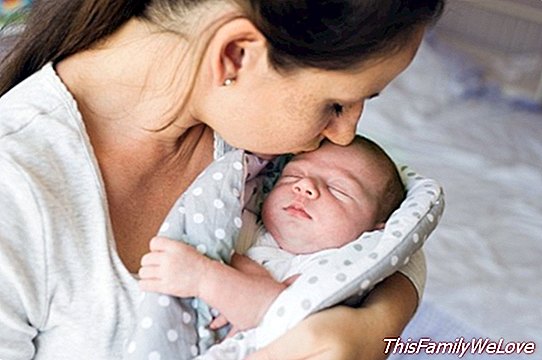The benefits of embrace in the development of the premature baby
The bond between parents and children can develop in many ways, from singing the baby while sleeping to betting on the skin with skin to have this physical closeness with the little ones. In fact a new study conducted by the Nationwide Children's Hospital highlights the benefits of hugging the smallest for its proper development.
In this investigation, it breaks with the topic that too many Hugs for a baby they can be harmful. In fact the conclusions of this work indicate that it is never too much, that betting on this physical closeness with the smallest favors the development of the brain of the smallest of the house.
Improvement in sensitivity
A total of 125 children, both premature and born at term, formed the sample of this study where the physical contact that the parents offered to their children through the hug was observed. The results showed that parents who bet on skin with skin faced less stress to painful procedures and other tests, results that were more evident in the case of premature babies.
The researchers warn that although it should be deepened in this On the ground, there is evidence that thanks to hugs the processing of physical pain in children's brains was better and less traumatic. However, it remains to be known if the hug contributes to a less intense emotional experience and the smaller ones are less marked.
The results of this study indicate that they could help babies treated in the emergency room to experience less painful processes, especially when facing medical tests. A new technique for which they are not used medicines and betting on a less invasive intervention for the baby. In this way, the experiences of the little ones become less traumatic within the hospital and in the case of premature babies, neuronal development is favored.

Benefits of skin with skin
This study certifies the skin-to-skin benefits that other studies have shown. To highlight other positive results of this physical closeness:
1. It favors the establishment of the mother-child bond. After nine months together, at the moment of childbirth, mother and child establish for the first time an affective bond that marks their relationship to a certain extent in successive stages. Therefore, the best time to establish this link is right at the moment of birth, when mother and child have physical contact for the first time and initiate an attachment phase that will be present throughout childhood.
2. It facilitates breastfeeding. Placing the baby on the mother as soon as it is born favors a spontaneous and effective suction on the part of the newborn that facilitates breastfeeding. Skin-to-skin contact facilitates the rise of milk thanks to the stimulation that the baby exerts on the breast.
The baby, on its own, performs suction to the breast, thus facilitating the next feeding and thus presents a shorter time to start an effective breastfeeding than other babies located next to the mother but without physical contact, which later encounter more difficulties in the moment to make that first shot.
3. It allows the thermal regulation of the baby. The skin-to-skin contact maintains the baby's temperature. It thus fulfills the function of facilitating thermal regulation in such a way that the temperature of the newborn always remains in a safe range. This function means that newborns placed in skin-to-skin contact with their mother are found to have a significantly warmer body temperature than babies placed in a crib.
4. It decreases the time of the baby's crying. The newborn who has contact with his mother skin to skin as soon as he is born cries for less time than the one who is separated from his mother from the beginning. The crying appears in these occasions in the newborns as a form of complaint to return to their mother from which they have just separated.
5. Decrease maternal anxiety and baby stress. Labor is a time of stress for both the child and the mother. Being skin-to-skin greatly decreases that stress, allowing both of them to be more relaxed and to decrease the high levels of tension proper to the moment of delivery.
Damián Montero




